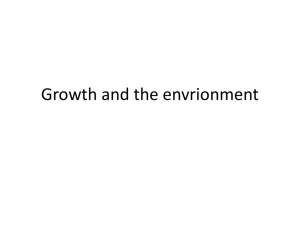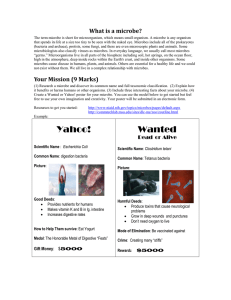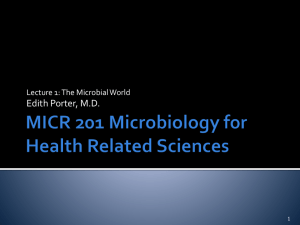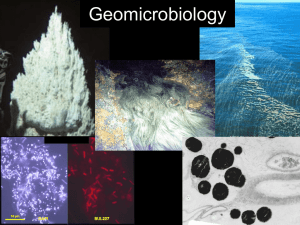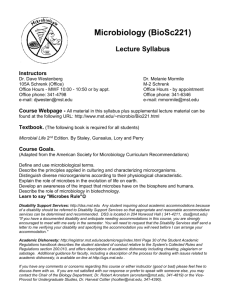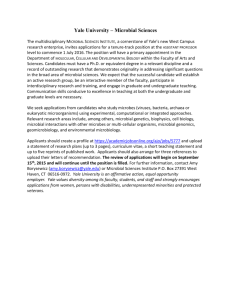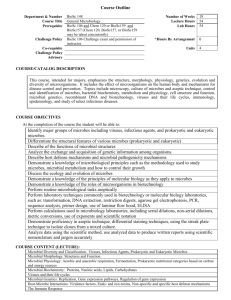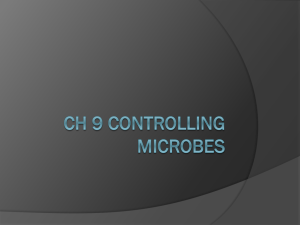Microbe Mission - New York State Science Olympiad
advertisement
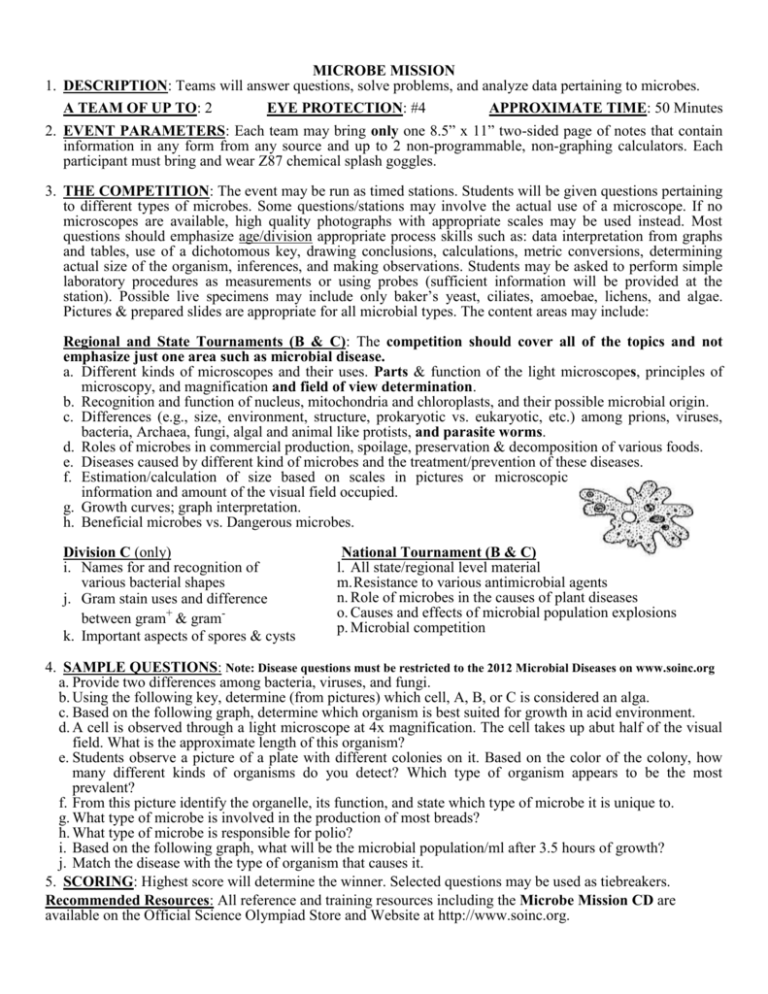
MICROBE MISSION 1. DESCRIPTION: Teams will answer questions, solve problems, and analyze data pertaining to microbes. A TEAM OF UP TO: 2 EYE PROTECTION: #4 APPROXIMATE TIME: 50 Minutes 2. EVENT PARAMETERS: Each team may bring only one 8.5” x 11” two-sided page of notes that contain information in any form from any source and up to 2 non-programmable, non-graphing calculators. Each participant must bring and wear Z87 chemical splash goggles. 3. THE COMPETITION: The event may be run as timed stations. Students will be given questions pertaining to different types of microbes. Some questions/stations may involve the actual use of a microscope. If no microscopes are available, high quality photographs with appropriate scales may be used instead. Most questions should emphasize age/division appropriate process skills such as: data interpretation from graphs and tables, use of a dichotomous key, drawing conclusions, calculations, metric conversions, determining actual size of the organism, inferences, and making observations. Students may be asked to perform simple laboratory procedures as measurements or using probes (sufficient information will be provided at the station). Possible live specimens may include only baker’s yeast, ciliates, amoebae, lichens, and algae. Pictures & prepared slides are appropriate for all microbial types. The content areas may include: Regional and State Tournaments (B & C): The competition should cover all of the topics and not emphasize just one area such as microbial disease. a. Different kinds of microscopes and their uses. Parts & function of the light microscopes, principles of microscopy, and magnification and field of view determination. b. Recognition and function of nucleus, mitochondria and chloroplasts, and their possible microbial origin. c. Differences (e.g., size, environment, structure, prokaryotic vs. eukaryotic, etc.) among prions, viruses, bacteria, Archaea, fungi, algal and animal like protists, and parasite worms. d. Roles of microbes in commercial production, spoilage, preservation & decomposition of various foods. e. Diseases caused by different kind of microbes and the treatment/prevention of these diseases. f. Estimation/calculation of size based on scales in pictures or microscopic information and amount of the visual field occupied. g. Growth curves; graph interpretation. h. Beneficial microbes vs. Dangerous microbes. Division C (only) i. Names for and recognition of various bacterial shapes j. Gram stain uses and difference between gram+ & gramk. Important aspects of spores & cysts National Tournament (B & C) l. All state/regional level material m. Resistance to various antimicrobial agents n. Role of microbes in the causes of plant diseases o. Causes and effects of microbial population explosions p. Microbial competition 4. SAMPLE QUESTIONS: Note: Disease questions must be restricted to the 2012 Microbial Diseases on www.soinc.org a. Provide two differences among bacteria, viruses, and fungi. b. Using the following key, determine (from pictures) which cell, A, B, or C is considered an alga. c. Based on the following graph, determine which organism is best suited for growth in acid environment. d. A cell is observed through a light microscope at 4x magnification. The cell takes up abut half of the visual field. What is the approximate length of this organism? e. Students observe a picture of a plate with different colonies on it. Based on the color of the colony, how many different kinds of organisms do you detect? Which type of organism appears to be the most prevalent? f. From this picture identify the organelle, its function, and state which type of microbe it is unique to. g. What type of microbe is involved in the production of most breads? h. What type of microbe is responsible for polio? i. Based on the following graph, what will be the microbial population/ml after 3.5 hours of growth? j. Match the disease with the type of organism that causes it. 5. SCORING: Highest score will determine the winner. Selected questions may be used as tiebreakers. Recommended Resources: All reference and training resources including the Microbe Mission CD are available on the Official Science Olympiad Store and Website at http://www.soinc.org.
